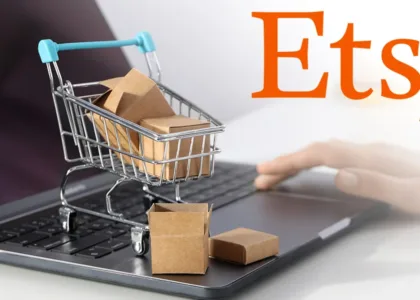Introduction
Amazon FBA (Fulfillment by Amazon) is one of the most popular ways to sell products online, but it comes with costs. Understanding Amazon FBA fees is essential to ensuring your business remains profitable. In this guide, we will break down these fees and provide actionable tips to maximize your profits in 2025.
What Are Amazon FBA Fees?
When you use Amazon FBA, Amazon handles storage, packaging, and shipping for your products. In return, they charge Amazon FBA fees, which include fulfillment fees, storage fees, and other costs. These fees can impact your bottom line, so it’s crucial to understand them.
Types of Amazon FBA Fees
Amazon charges various fees based on factors like product size, weight, and storage duration. Below are the key Amazon FBA fees sellers should consider:
1. Fulfillment Fees
Fulfillment fees cover picking, packing, and shipping your products. They vary based on size and weight. Here are the estimated costs for 2025:
- Standard-size items: $3.50 to $5.00 per unit
- Oversized items: $8.00 to $15.00 per unit
- Special handling products: Higher fees apply for fragile or hazardous materials
2. Storage Fees
Amazon charges fees for storing inventory in its warehouses. The costs depend on the season and storage volume:
- January to September: $0.87 per cubic foot
- October to December: $2.40 per cubic foot
- Long-term storage fees: Additional charges apply for inventory stored over 365 days
3. Referral Fees
Amazon takes a percentage of each sale, usually ranging from 8% to 15% depending on the product category. For example:
- Electronics: 8%
- Beauty products: 15%
- Clothing: 17%
4. Removal and Disposal Fees
If you need to remove or dispose of inventory, Amazon charges a fee per unit. The estimated costs in 2025 are:
- Removal fees: $0.50 to $2.00 per unit
- Disposal fees: $0.25 to $1.50 per unit
5. Returns Processing Fees
For categories where Amazon offers free returns, sellers are charged a processing fee, especially for apparel and shoes. This fee can range from $2.00 to $5.00 per return.
How to Calculate Amazon FBA Fees
To estimate your Amazon FBA fees, you can use Amazon’s FBA Revenue Calculator. This tool allows you to enter product details and get an accurate cost breakdown.
Strategies to Reduce Amazon FBA Fees and Maximize Profits
Now that you understand Amazon FBA fees, let’s explore ways to minimize costs and increase profits in 2025.
1. Optimize Product Size and Weight
Amazon charges lower Amazon FBA fees for smaller and lighter items. Consider repackaging your products to reduce dimensions and weight.
2. Manage Inventory Efficiently
Avoid long-term storage fees by keeping your inventory levels optimized. Use sales forecasting tools to predict demand and prevent excess stock.
3. Use Amazon FBA Small and Light Program
If your products are under 3 lbs and priced below $12, enroll in Amazon’s Small and Light Program to lower fulfillment fees.
4. Bundle Products
Bundling multiple items into a single listing can help lower Amazon FBA fees and increase the average order value, boosting your profit margins.
5. Offer Multi-Channel Fulfillment (MCF)
Amazon allows sellers to use FBA for orders from other platforms like Shopify or eBay. This can help offset Amazon FBA fees by diversifying sales channels.
6. Monitor Return Rates
High return rates can lead to additional fees. Improve product descriptions and images to set clear customer expectations and reduce returns.
7. Negotiate Better Supplier Deals
Cut costs by negotiating lower prices with suppliers. Lowering your product cost offsets Amazon FBA fees, helping maintain profitability.
8. Take Advantage of Free Removal Promotions
Amazon occasionally offers free removal promotions, allowing you to remove unsold inventory at no extra cost. Keep an eye on these offers in Seller Central.
Tools to Track and Reduce Amazon FBA Fees
Using analytics tools can help track expenses and find cost-saving opportunities. Some popular options include:
- Helium 10 – Tracks inventory and profit margins
- Jungle Scout – Helps with sales forecasting
- SellerBoard – Provides real-time profit calculations
Amazon FBA vs. FBM: Which is Better?
Some sellers consider switching to Fulfillment by Merchant (FBM) to avoid Amazon FBA fees. Here’s a comparison:
| Feature | FBA | FBM |
| Storage & Fulfillment | Amazon handles | Seller handles |
| Prime Eligibility | Yes | No (unless using Seller Fulfilled Prime) |
| Costs | Higher fees | Lower fees but more work |
| Customer Service | Amazon handles | Seller handles |
For high-volume sellers, FBA is often worth the Amazon FBA fees because of convenience and Prime eligibility.
2025 Amazon FBA Fee Changes to Watch For
Amazon periodically updates its fee structure. Potential changes for 2025 include:
- Higher long-term storage fees to encourage faster inventory turnover
- Updated fulfillment fee tiers based on inflation and logistics costs
- Sustainability fees for excessive packaging waste
Conclusion
Understanding Amazon FBA fees is key to running a profitable business on Amazon. By optimizing product size, managing inventory, and leveraging cost-saving strategies, sellers can maximize profits in 2025.
Get Expert Help with Your Amazon FBA Business
Managing Amazon FBA fees can be complex, but you don’t have to do it alone. At Ecombizzform, we help sellers optimize their FBA strategies, reduce costs, and increase profits. Contact us today to start growing your Amazon business!
Additional Resources
For more information on Amazon selling, check out:
By applying these strategies, you can keep Amazon FBA fees under control and make 2025 your most profitable year yet!





